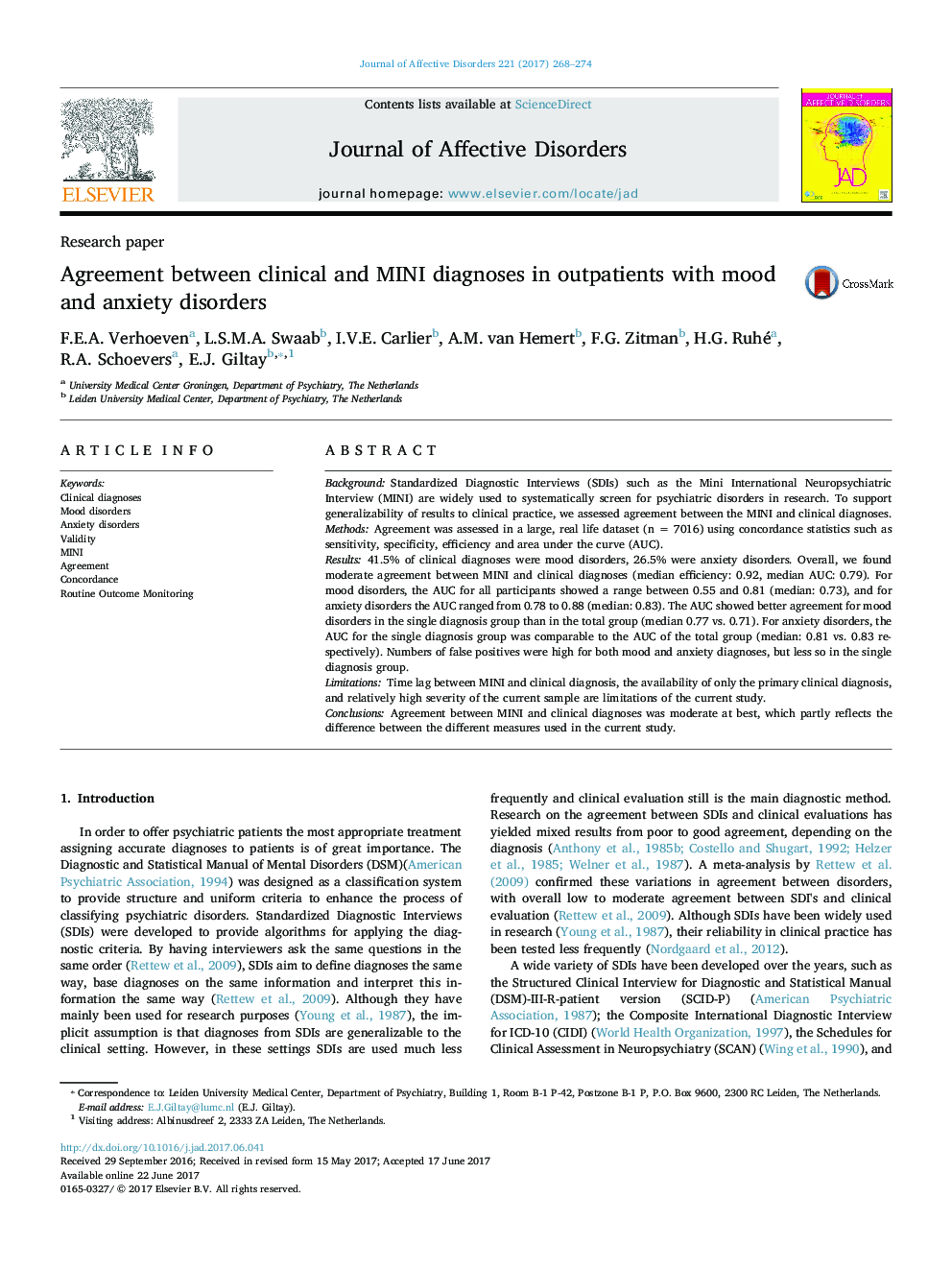| کد مقاله | کد نشریه | سال انتشار | مقاله انگلیسی | نسخه تمام متن |
|---|---|---|---|---|
| 5722018 | 1608104 | 2017 | 7 صفحه PDF | دانلود رایگان |

- Agreement between standardized and clinical assessment was tested.
- Agreement was found to be overall fair to acceptable.
- Comorbidity may adversely affect agreement rates.
- Standardized assessment can be added to clinical assessment to detect comorbidity.
- Detecting comorbid diagnoses may have consequences for prognosis and treatment.
BackgroundStandardized Diagnostic Interviews (SDIs) such as the Mini International Neuropsychiatric Interview (MINI) are widely used to systematically screen for psychiatric disorders in research. To support generalizability of results to clinical practice, we assessed agreement between the MINI and clinical diagnoses.MethodsAgreement was assessed in a large, real life dataset (n = 7016) using concordance statistics such as sensitivity, specificity, efficiency and area under the curve (AUC).Results41.5% of clinical diagnoses were mood disorders, 26.5% were anxiety disorders. Overall, we found moderate agreement between MINI and clinical diagnoses (median efficiency: 0.92, median AUC: 0.79). For mood disorders, the AUC for all participants showed a range between 0.55 and 0.81 (median: 0.73), and for anxiety disorders the AUC ranged from 0.78 to 0.88 (median: 0.83). The AUC showed better agreement for mood disorders in the single diagnosis group than in the total group (median 0.77 vs. 0.71). For anxiety disorders, the AUC for the single diagnosis group was comparable to the AUC of the total group (median: 0.81 vs. 0.83 respectively). Numbers of false positives were high for both mood and anxiety diagnoses, but less so in the single diagnosis group.LimitationsTime lag between MINI and clinical diagnosis, the availability of only the primary clinical diagnosis, and relatively high severity of the current sample are limitations of the current study.ConclusionsAgreement between MINI and clinical diagnoses was moderate at best, which partly reflects the difference between the different measures used in the current study.
Journal: Journal of Affective Disorders - Volume 221, 15 October 2017, Pages 268-274